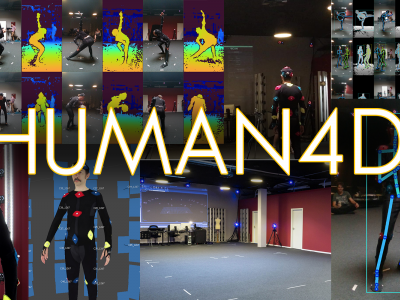Audio
Most of existing audio fingerprinting systems have limitations to be used for high-specific audio retrieval at scale. In this work, we generate a low-dimensional representation from a short unit segment of audio, and couple this fingerprint with a fast maximum inner-product search. To this end, we present a contrastive learning framework that derives from the segment-level search objective. Each update in training uses a batch consisting of a set of pseudo labels, randomly selected original samples, and their augmented replicas.
- Categories:
 1866 Views
1866 ViewsThe sound part is built into many products.
It is used not only in audio systems, but also in a wide range of industries such as home theaters, broadcast amplifier systems, TVs, computers, AI speakers, and game consoles.
Even now, many companies are making efforts to improve the sound quality of the acoustic part.
In the future, high sound quality will be required in many industrial fields.
A wide range of industries will require high-quality technology.
- Categories:
 112 Views
112 ViewsWe introduce HUMAN4D, a large and multimodal 4D dataset that contains a variety of human activities simultaneously captured by a professional marker-based MoCap, a volumetric capture and an audio recording system. By capturing 2 female and 2 male professional actors performing various full-body movements and expressions, HUMAN4D provides a diverse set of motions and poses encountered as part of single- and multi-person daily, physical and social activities (jumping, dancing, etc.), along with multi-RGBD (mRGBD), volumetric and audio data. Despite the existence of multi-view color datasets c
- Categories:
 1368 Views
1368 ViewsTime Scale Modification (TSM) is a well-researched field; however, no effective objective measure of quality exists. This paper details the creation, subjective evaluation, and analysis of a dataset for use in the development of an objective measure of quality for TSM. Comprised of two parts, the training component contains 88 source files processed using six TSM methods at 10 time scales, while the testing component contains 20 source files processed using three additional methods at four time scales.
- Categories:
 629 Views
629 ViewsThe Heidelberg Spiking Datasets comprise two spike-based classification datasets: The Spiking Heidelberg Digits (SHD) dataset and the Spiking Speech Command (SSC) dataset. The latter is derived from Pete Warden's Speech Commands dataset (https://arxiv.org/abs/1804.03209), whereas the former is based on a spoken digit dataset recorded in-house and included in this repository. Both datasets were generated by applying a detailed inner ear model to audio recordings. We distribute the input spikes and target labels in HDF5 format.
- Categories:
 2109 Views
2109 ViewsThe dataset consists of EEG recordings obtained when subjects are listening to different utterances : a, i, u, bed, please, sad. A limited number of EEG recordings where also obtained when the three vowels were corrupted by white and babble noise at an SNR of 0dB. Recordings were performed on 8 healthy subjects.
- Categories:
 1293 Views
1293 Views이 그룹은 음향 장비 분야의 음향 증폭기 회로에 실리콘 트랜지스터를 사용할 때 오디오 관점에서 출력 신호의 음향 특성을 향상시키는 것을 목표로합니다.
음향 증폭기 회로에서 실리콘 트랜지스터를 사용할 때 사운드 출력은 차갑고 거칠고 선명하며 풍부하지 않은 것으로 알려져 있습니다. 따라서 오디오 애호가들은 여전히 진공관을 사용하는 증폭기를 좋아합니다. 오디오 애호가는 소리를들을 수있는 능력 때문에 음질을 판단하는 뛰어난 능력을 가지고 있습니다.
그래서이 그룹은 실리콘 트랜지스터의 불충분 한 사운드 특성을 제거하고 튜브의 사운드로 개선하는 방법을 보여줍니다.
이 개선 방법을 적용하여이 부분을 만드는 과정을 논의하고 마지막으로 실제 부분으로 만들 것입니다.
한국어로 쓰여진 원본이 포함되어 있습니다.
여러 파일 중 가장 큰 개정 번호 만 사용하십시오.
나머지는 비교를위한 데이터입니다.
- Categories:
 421 Views
421 ViewsWe propose a new concept audio system, It is an audio system with slots for inserting function units in one main body. It is a group for producing the first product for standardization. (Network audio player, DDC, DAC, PHONO equalizer, PRE Amplifier, POWER Amplifier, POWER SUPPLY, etc.) The internal main board has slots for inserting the unit, and the corresponding unit can be installed and replaced with another compatible unit. Function units are made in card format and can be upgraded or replaced with other branded products in the future.
- Categories:
 258 Views
258 ViewsThe steganography and steganalysis of audio, especially compressed audio, have drawn increasing attention in recent years, and various algorithms are proposed. However, there is no standard public dataset for us to verify the efficiency of each proposed algorithm. Therefore, to promote the study field, we construct a dataset including 33038 stereo WAV audio clips with a sampling rate of 44.1 kHz and duration of 10s. And, all audio files are from the Internet through data crawling, which is for a better simulation of a real detection environment.
- Categories:
 3101 Views
3101 Views




